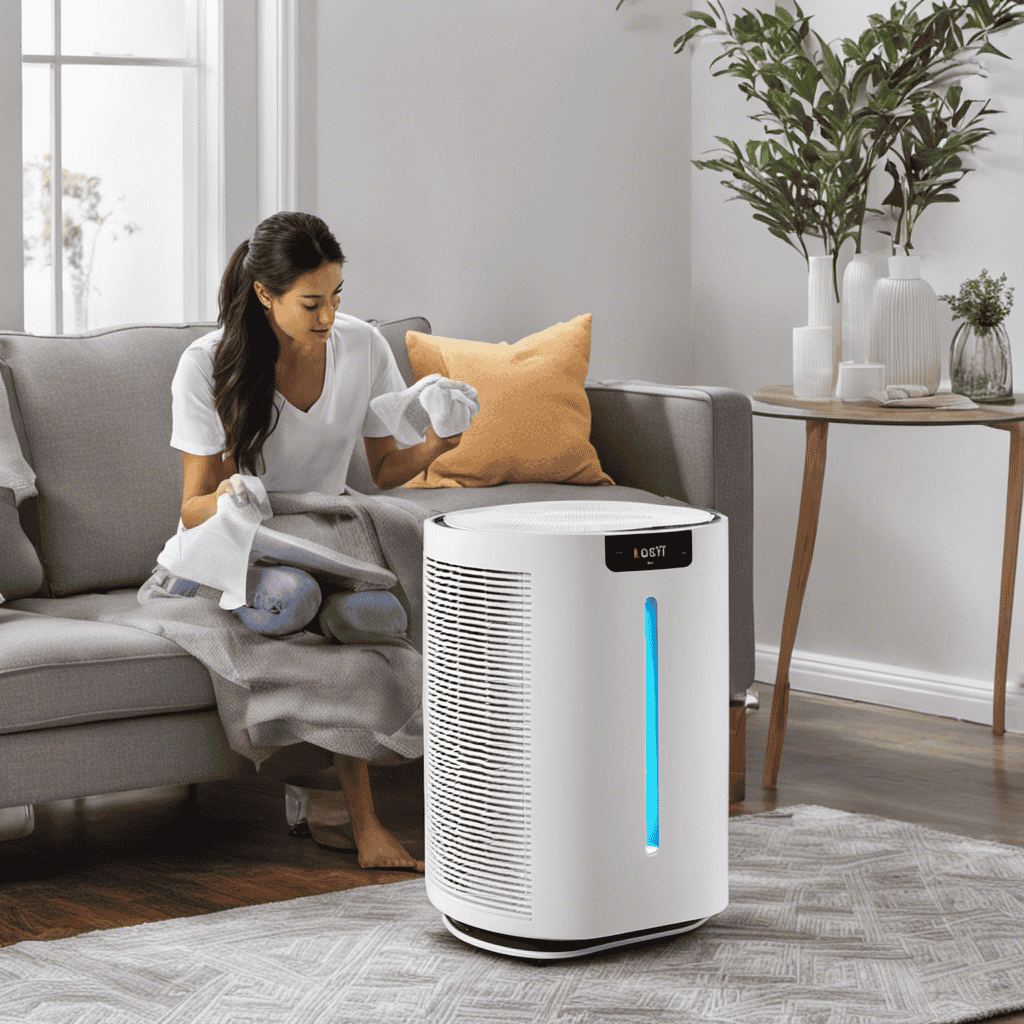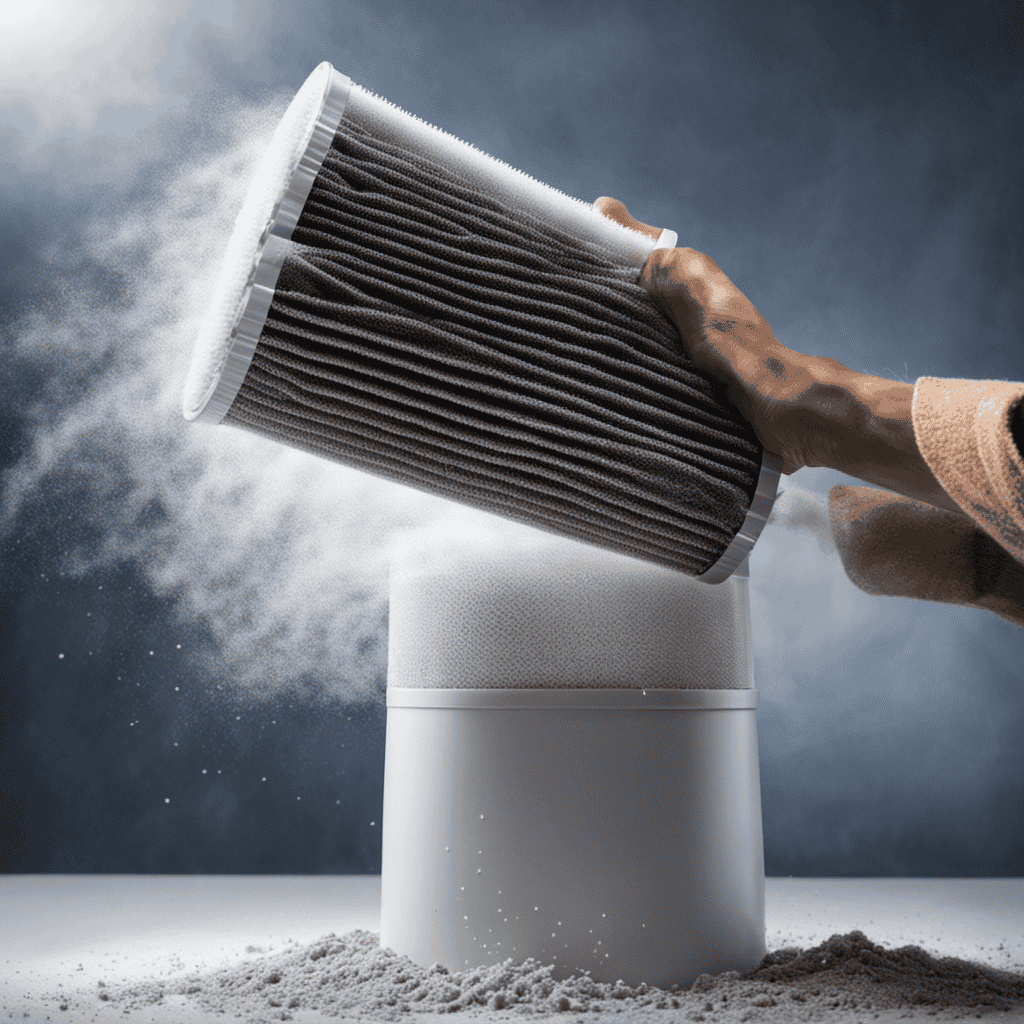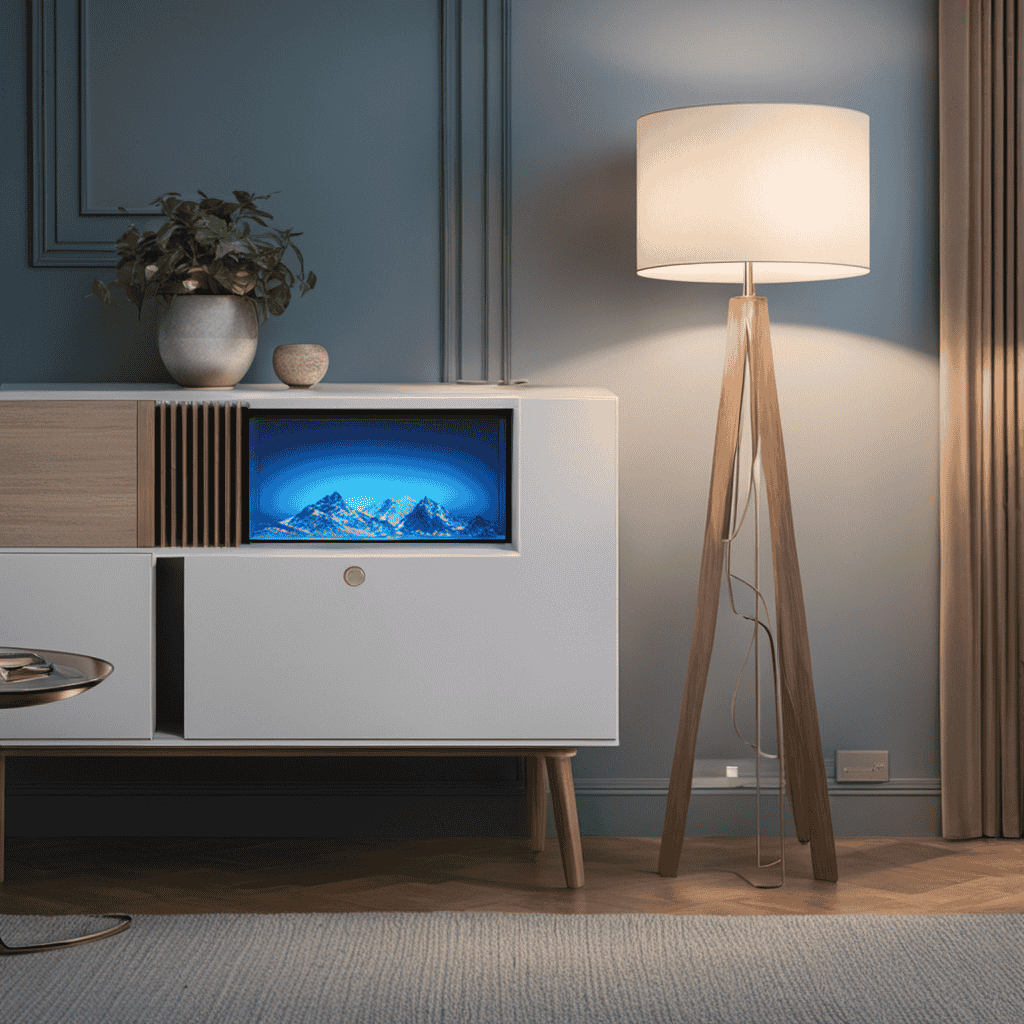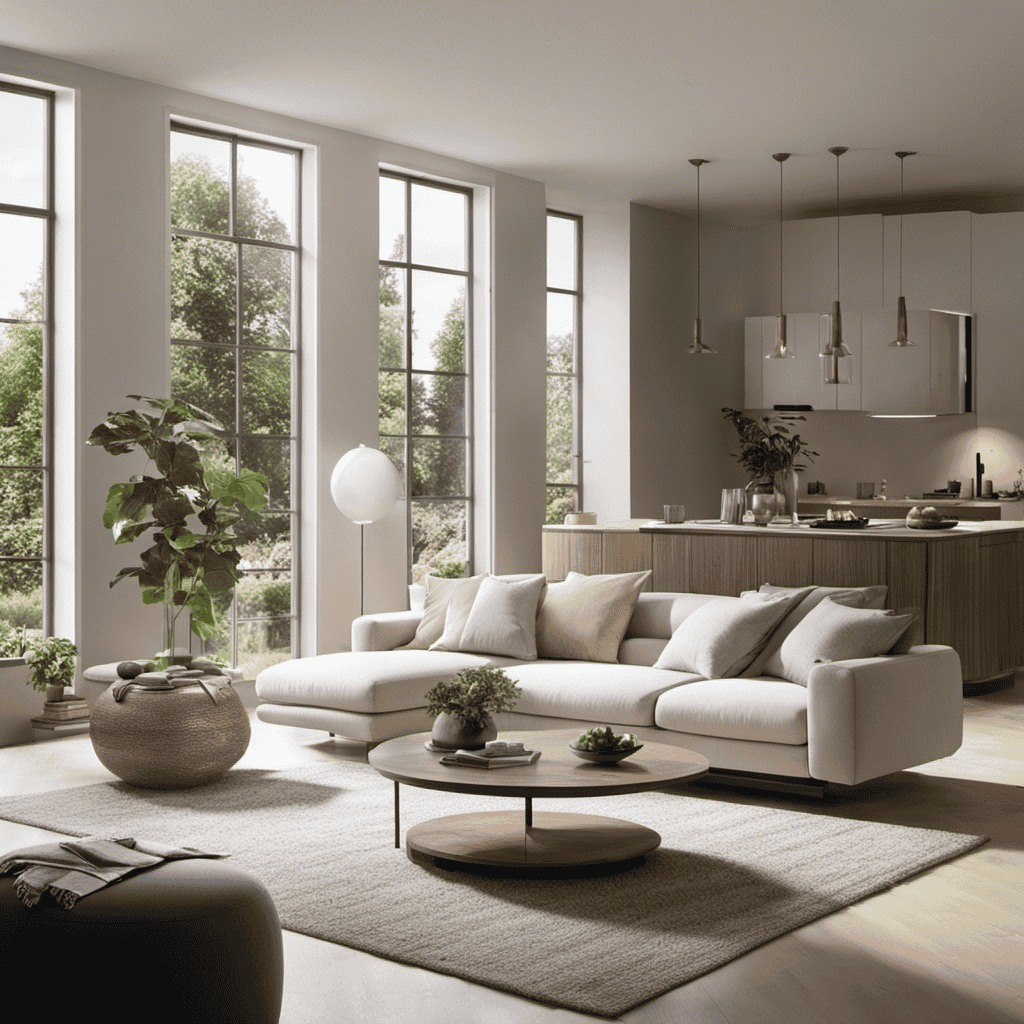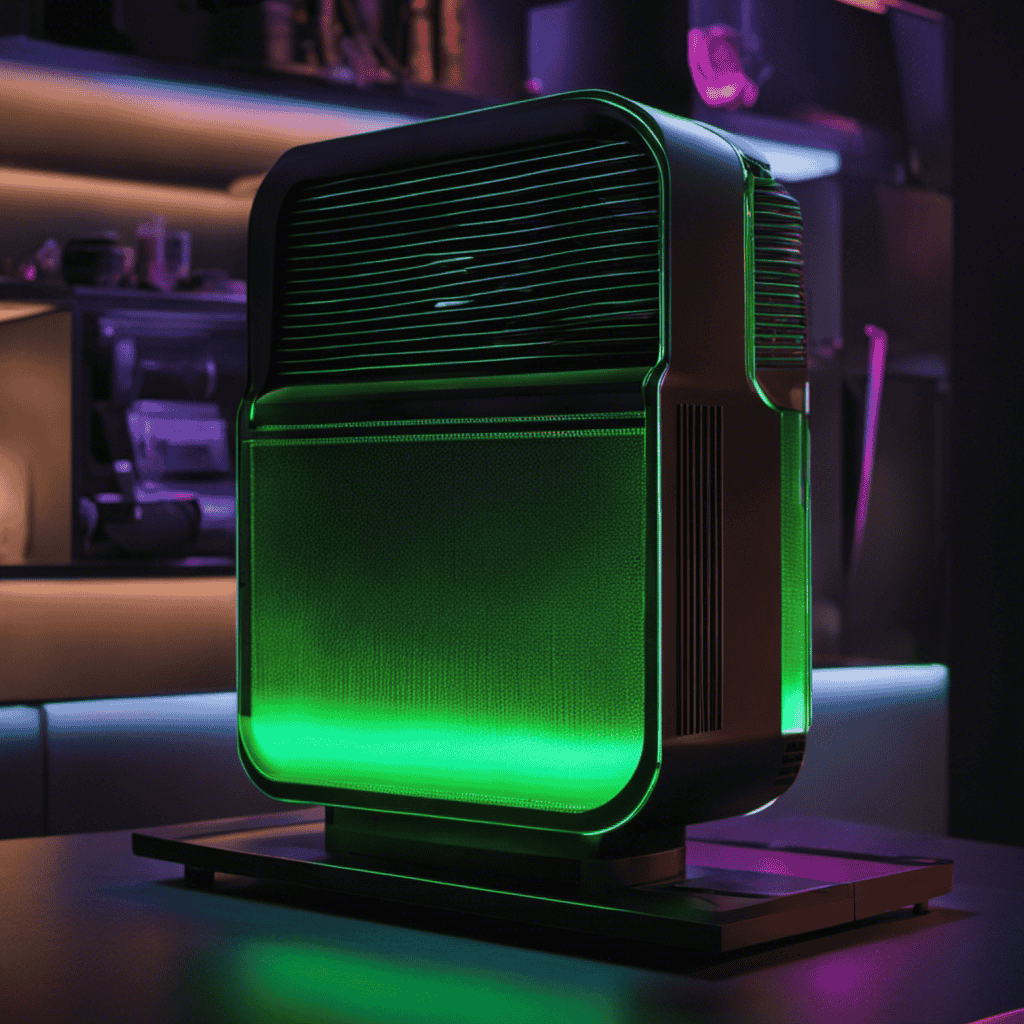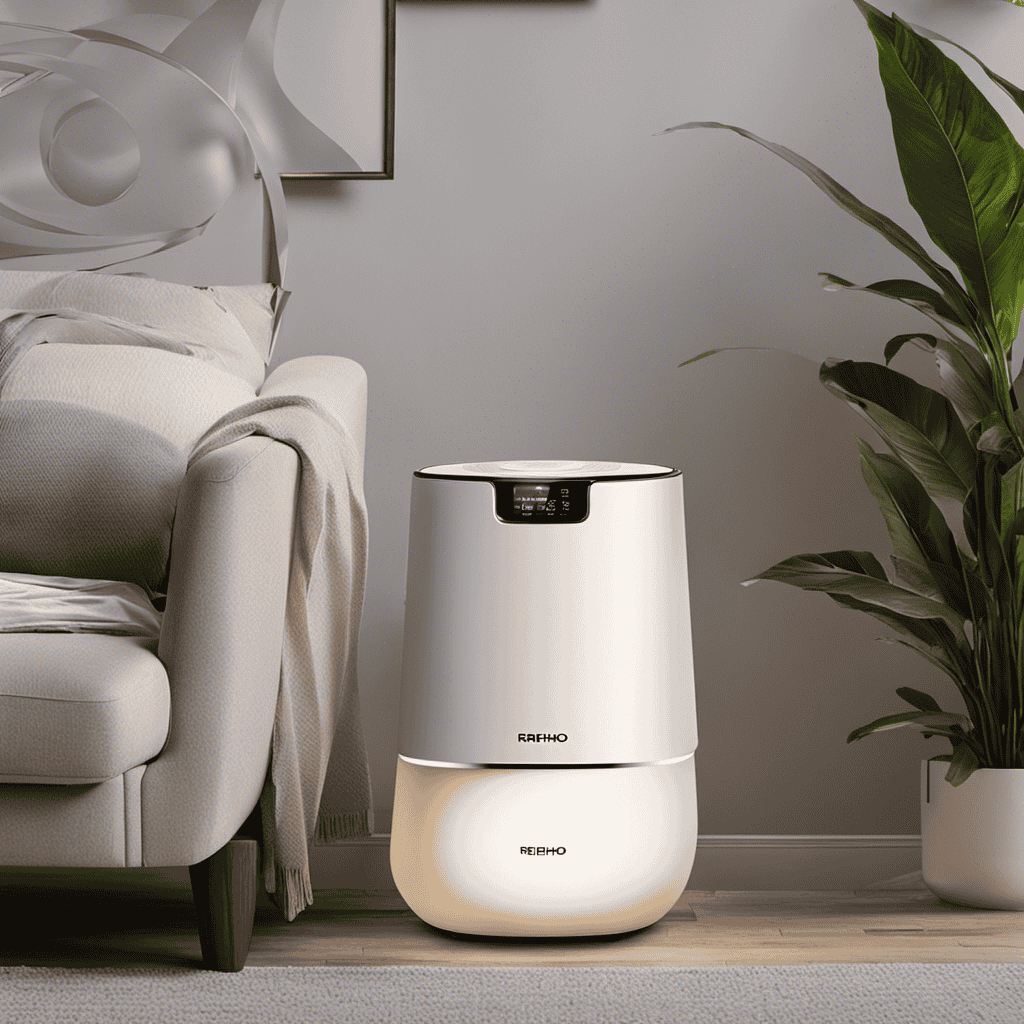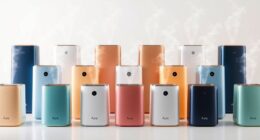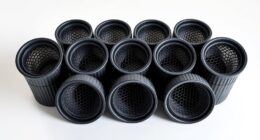Want to keep your air purifier working at its best? Well, here’s a secret for you: **A dirty air purifier filter can cut its effectiveness by half!** That’s right, keeping that filter clean is crucial to ensure your air stays clean and fresh at all times. Don’t let a clogged filter compromise the quality of the air you breathe – keep it clean for optimal performance!
As someone who values clean and fresh air in my home, I understand the importance of regularly cleaning the air purifier filter.
In this article, I will guide you through the step-by-step process of cleaning the air purifier filter for the Levoit brand.
By following these instructions, you can ensure that your air purifier is running at its optimal performance and providing you with the cleanest air possible.
Key Takeaways
- Neglecting filter maintenance reduces air purifier effectiveness by up to 50%
- Regular cleaning ensures longevity and optimal particle capture
- Different techniques like vacuuming, rinsing, or replacing can be used
- Proper cleaning maintains air purifier efficiency
Understanding the Importance of Cleaning the Air Purifier Filter
Understanding the importance of cleaning the air purifier filter is crucial for maintaining optimal air quality. Neglecting filter maintenance can lead to a buildup of dirt, dust, and other pollutants, reducing the efficiency of the air purifier and potentially causing respiratory issues.
Regular cleaning not only ensures the longevity of the filter but also allows it to effectively capture particles and allergens from the air. To clean the air purifier filter, there are several techniques you can use depending on the model and type of filter. These techniques may include vacuuming, rinsing, or even replacing the filter altogether.
By properly cleaning the filter, you can ensure that your air purifier continues to work efficiently and effectively.
Now, let’s move on to the next step: gathering the necessary supplies for cleaning.
Gather the Necessary Supplies for Cleaning
To get started, you’ll need a few supplies for cleaning your Levoit air purifier filter. Cleaning your air purifier filter is an important maintenance task that ensures your purifier functions optimally and keeps the air in your home clean and fresh.
The first thing you’ll need is a soft brush or vacuum cleaner with a brush attachment. This will help you remove any dust or debris from the surface of the filter.
Next, you’ll need a mild detergent or dish soap and warm water. Mix the detergent with water and use a soft cloth or sponge to gently clean the filter. Make sure to rinse it thoroughly and let it dry completely before reinstalling it in your air purifier.
Following these filter cleaning techniques and using the recommended cleaning supplies will help extend the lifespan of your Levoit air purifier and maintain its effectiveness.
Powering Off and Disconnecting the Air Purifier
Before disconnecting the air purifier, make sure to power it off and unplug it from the electrical outlet. Safety precautions are crucial to avoid any accidents or damage.
Begin by locating the power button on the purifier and switch it off. This ensures that no electricity is running through the device while you work on it.
Next, unplug the purifier from the electrical outlet to completely disconnect it from the power source. This step is essential to prevent any potential electric shock.
Always handle the power cord carefully to avoid any fraying or damage.
Removing the Filter From the Air Purifier
When it comes to removing the filter from your air purifier, there are a few key techniques that I have found to be effective.
One method is to carefully follow the manufacturer’s instructions, which often involve unlocking or unlatching a compartment and gently pulling the filter out.
Another technique is to locate the filter release button or lever and use it to disengage the filter from its housing.
Once the filter is removed, it is important to follow proper maintenance tips, such as cleaning or replacing the filter regularly, to ensure the optimal performance and longevity of your air purifier.
Filter Removal Techniques
First, make sure you unplug the air purifier before attempting to remove the filter. Proper filter maintenance is essential for the optimal performance of your air purifier.
When it comes to filter replacement, it’s important to follow the manufacturer’s instructions to ensure the best results. To remove the filter, locate the filter compartment, usually located at the back or side of the air purifier. Open the compartment and carefully slide out the old filter. Be cautious not to damage the filter or any surrounding parts. Once removed, dispose of the old filter properly.
Cleaning or replacing the filter is an integral part of regular maintenance for air purifiers. By taking care of your filters, you can prolong the lifespan of your air purifier and maintain clean, fresh air in your home.
Maintenance Tips for Filters
To ensure optimal performance, regularly check your air purifier’s filter and replace it as needed.
Proper filter maintenance is essential for the efficiency and effectiveness of the air purifier.
Cleaning techniques can vary depending on the type of filter used in your air purifier.
For pre-filters and activated carbon filters, gently vacuuming or rinsing with water can help remove dust and debris.
HEPA filters, on the other hand, require more care. It is recommended to vacuum the surface of the filter to remove larger particles and then gently wash it with water and mild soap.
Allow the filter to dry completely before reinstalling it.
Remember, regular filter maintenance is crucial for maintaining clean and healthy air in your home.
Inspecting the filter for dirt and debris will help you determine whether it needs cleaning or replacement.
Inspecting the Filter for Dirt and Debris
When it comes to maintaining the air purifier’s efficiency, it’s essential to follow cleaning frequency recommendations.
Regular cleaning ensures that the filter is free from visible contaminants, such as dust and debris, which can hinder its performance.
To properly inspect the filter, one should employ techniques such as visual examination and tactile assessment to identify any signs of dirt or clogging that may require immediate attention.
Cleaning Frequency Recommendations
Make sure you’re aware of the recommended cleaning frequency for your Levoit air purifier filter. Proper maintenance of the filter is crucial for the optimal performance of your air purifier. Refer to the table below to determine the cleaning frequency based on the type of filter:
| Filter Type | Recommended Cleaning Frequency |
|---|---|
| Pre-filter | Every 2 weeks |
| True HEPA | Every 6 months |
| Activated | Every 6 months |
| Carbon | Every 6 months |
| Filter |
Following these cleaning techniques will ensure that your Levoit air purifier continues to provide clean and fresh air for your space. Regularly cleaning the pre-filter, true HEPA filter, and activated carbon filter will remove dust, allergens, and odors from the air. This will not only improve the air quality but also prolong the lifespan of the filters. By adhering to the recommended cleaning frequency, you can ensure that your Levoit air purifier operates efficiently and effectively.
Now that you know the recommended cleaning frequency for your air purifier filter, let’s move on to the next step: removing visible contaminants.
Removing Visible Contaminants
Removing visible contaminants is essential for ensuring the cleanliness and efficiency of your air purification system. As a knowledgeable air purifier owner, it is crucial to understand proper filter maintenance and cleaning techniques. Here are three key points to consider in your pursuit of a cleaner and healthier indoor environment:
-
Regular cleaning: Regularly remove visible contaminants from your air purifier’s filter to prevent clogging and maintain optimal airflow. This can be done by gently vacuuming or brushing off the surface of the filter.
-
Washing the filter: Some air purifier filters are washable. Follow the manufacturer’s instructions to properly clean and dry the filter. Be cautious not to damage the delicate filter material during the cleaning process.
-
Replacing the filter: Depending on the type and usage of your air purifier, it may be necessary to replace the filter periodically. Check the manufacturer’s guidelines for recommended filter replacement intervals.
By implementing these filter maintenance and cleaning techniques, you can ensure that your air purifier operates at its highest efficiency, effectively removing harmful pollutants from your indoor air.
Now, let’s move on to exploring proper inspection techniques to further enhance your air purification system’s performance.
Proper Inspection Techniques
To ensure optimal performance of your air purification system, it’s important to regularly inspect the various components for any signs of wear or damage. Proper inspection techniques and maintenance methods are crucial for identifying and addressing any issues before they worsen or affect the efficiency of the system. Here are some key inspection techniques and maintenance methods to keep in mind:
| Inspection Techniques | Maintenance Methods |
|---|---|
| Check air filter | Clean or replace |
| Inspect fan blades | Remove dust buildup |
| Examine electrical connections | Tighten or replace if necessary |
| Inspect air vents | Clean or remove obstructions |
| Check control panel | Clean and ensure proper functioning |
Preparing the Cleaning Solution
First, gather the necessary ingredients for the cleaning solution. To prepare an effective cleaning solution for your air purifier filter, it is crucial to select the right cleaning products. Here are three key items you will need:
-
Distilled water: Using distilled water ensures that no impurities or minerals are present, which can potentially damage the filter or affect its performance.
-
Mild dish soap: Opt for a gentle, non-abrasive dish soap that is free of harsh chemicals. This will help to effectively remove dirt, dust, and other contaminants from the filter without causing any damage.
-
Microfiber cloth or soft brush: These tools are essential for physically cleaning the filter. A microfiber cloth can be used to gently wipe away dirt and grime, while a soft brush can help to dislodge stubborn particles.
Soaking the Filter in the Cleaning Solution
Once you have gathered the necessary ingredients for the cleaning solution, it’s time to soak the filter in the mixture for a designated period of time. Soaking the filter is an essential step in effectively cleaning your Levoit air purifier.
This process allows the cleaning solution to penetrate deep into the filter, loosening and dissolving dirt and debris. For optimal results, it is recommended to soak the filter overnight for deep cleaning.
During this time, the cleaning solution will work its magic, breaking down any trapped pollutants and allergens. To further enhance the cleaning process, gently scrubbing the filter with a soft brush can help dislodge stubborn dirt.
This combination of soaking and scrubbing will ensure a thorough and effective cleaning of your air purifier filter.
In the next section, we will discuss how to gently agitate the filter to remove any remaining dirt.
Gently Agitating the Filter to Remove Stubborn Dirt
Gently agitate the filter by shaking it back and forth to dislodge any stubborn dirt. This step is crucial in ensuring effective cleaning of your Levoit air purifier filter. By agitating the filter, you help to loosen and remove dirt particles that may have become trapped over time.
Here are three agitating techniques that can aid in stubborn dirt removal:
-
Side-to-side shaking: Hold the filter firmly and move it horizontally from one side to another. This motion helps to dislodge dirt that is stuck on the surface of the filter.
-
Up and down shaking: Hold the filter securely and move it vertically in an up and down motion. This action helps to loosen any debris that may be embedded in the filter material.
-
Circular shaking: Rotate the filter in a circular motion, being careful not to apply too much force. This technique helps to dislodge dirt from all areas of the filter.
Rinsing the Filter With Clean Water
To rinse the filter, you’ll need to use clean water.
Filter maintenance is crucial for the proper functioning of your air purifier. Cleaning techniques play a vital role in ensuring the longevity and efficiency of the filter.
Start by removing the filter from the air purifier according to the manufacturer’s instructions. Gently tap the filter to remove any loose debris. Then, place the filter under running water and rinse it thoroughly. Make sure to rinse both sides of the filter to remove all the trapped particles.
Use your fingers to dislodge any stubborn dirt, but be careful not to damage the filter. Once the water runs clear, gently shake off any excess water and allow the filter to air dry completely before reinstalling it into the air purifier.
Regular filter maintenance and proper cleaning techniques are essential for maintaining clean and healthy air in your home.
Allowing the Filter to Air Dry
After rinsing the filter, it’s important to let it air dry completely before reinstalling it. Air drying the filter has several benefits that contribute to the overall effectiveness of your air purifier. Here are three key points to consider:
-
Prevents the growth of mold and bacteria: Air drying allows any residual moisture on the filter to evaporate, reducing the risk of mold and bacteria growth. This ensures that the filter remains clean and free from harmful contaminants.
-
Preserves the filter’s lifespan: Exposing the filter to excessive heat or using alternative drying methods such as using a hairdryer or towel can damage the delicate filter material. Air drying, on the other hand, minimizes the risk of physical damage, allowing the filter to last longer and perform optimally.
-
Maintains the filter’s efficiency: By air drying the filter, you allow it to regain its natural airflow and filtration capabilities. This ensures that the filter can effectively capture and remove airborne pollutants, improving the air quality in your space.
Cleaning the Exterior of the Air Purifier
When wiping down the exterior of your air purifier, make sure to use a soft cloth and a mild cleaning solution. This will help to remove any dust, dirt, or fingerprints that may have accumulated on the surface. It is important to avoid using abrasive cleaners or harsh chemicals, as they can damage the finish of the purifier. To ensure a thorough cleaning, follow these recommended exterior cleaning techniques:
| Cleaning Method | Description |
|---|---|
| Soft Cloth | Use a soft, lint-free cloth to gently wipe the surface of the purifier. Avoid applying too much pressure to prevent scratching. |
| Mild Cleaning Solution | Mix a small amount of mild dish soap or vinegar with warm water. Dampen the cloth with this solution and wipe down the exterior of the purifier. |
| Dry Cloth | After cleaning, use a dry cloth to remove any excess moisture and buff the surface to a shine. |
Reinstalling the Filter Into the Air Purifier
Before reinstalling the filter, make sure the air purifier is powered off and unplugged. This step is crucial to ensure safety and prevent any electrical accidents.
Once the air purifier is safely disconnected from the power source, you can proceed with reinstalling the filter correctly.
Here are three common filter cleaning mistakes to avoid:
-
Neglecting to clean the surrounding area: It’s important to clean the air purifier’s interior and exterior thoroughly before reinstalling the filter. Dust and debris can accumulate in these areas, affecting the filter’s performance.
-
Improperly handling the filter: When removing and reinstalling the filter, it’s essential to handle it with care. Avoid touching the filter’s surface directly, as this can leave behind oils or damage the delicate fibers.
-
Not following the manufacturer’s instructions: Each air purifier model may have specific instructions for replacing the filter correctly. It’s crucial to read and follow these instructions to ensure optimal performance and longevity of the filter and the air purifier itself.
Performing a Test Run to Ensure Proper Functioning
Once you have completed the installation of the filter, it’s important to perform a test run to ensure that the air purifier is functioning properly. This step is essential in maintaining the efficiency of your Levoit air purifier and ensuring that it effectively removes pollutants from the air.
Performing maintenance and troubleshooting techniques regularly will help to identify any potential issues and allow you to address them promptly.
To perform the test run, follow these steps:
- Turn on the air purifier and set it to the highest fan speed.
- Allow the purifier to run for at least 10 minutes.
- Observe the air quality indicator on the control panel. It should show a significant improvement in air quality.
- Listen for any unusual noises or vibrations coming from the purifier.
- Check the filter indicator light. If it is not illuminated or is blinking, the filter may need to be replaced.
Establishing a Regular Cleaning Schedule
It’s important to regularly establish a cleaning schedule for your air purifier to maintain its efficiency and ensure it continues to provide clean and fresh air. By following the best cleaning practices and techniques, you can prolong the lifespan of your air purifier and optimize its performance.
Here are three key steps to include in your cleaning schedule:
-
Vacuuming: Use a soft brush attachment to gently remove dust and debris from the exterior of your air purifier. Pay close attention to the vents and filters, as these areas tend to accumulate the most dirt.
-
Wiping: Use a mild detergent and a damp cloth to wipe down the surfaces of your air purifier. This will help remove any stubborn dirt or grime.
-
Filter Replacement: Regularly check the manufacturer’s instructions for the recommended filter replacement frequency. Replace the filters as directed to ensure maximum filtration efficiency.
Troubleshooting Common Issues With Air Purifier Filters
To troubleshoot common issues with your air purifier filters, try checking for any visible damage or clogs that may be affecting their performance.
Filter clogs can greatly reduce the effectiveness of your air purifier and increase the risk of indoor air pollution. Start by inspecting the filter for any signs of dirt, debris, or buildup. If you notice any clogs, gently tap the filter to dislodge the particles or use a soft brush to remove them.
For stubborn clogs, you may need to use a cleaning solution specifically designed for air purifier filters. When choosing a cleaning solution, make sure it is compatible with your filter type and follow the manufacturer’s instructions. Remember to always allow the filter to dry completely before reinserting it into the air purifier.
Regular maintenance and proper cleaning techniques will help extend the lifespan of your air purifier filters and ensure optimal performance.
Frequently Asked Questions
How Often Should I Clean My Air Purifier Filter?
I clean my air purifier filter every three months as recommended. It’s important to follow the manufacturer’s instructions for best practices. Regular cleaning ensures optimal performance and extends the lifespan of the filter.
Can I Use a Regular Cleaning Solution or Do I Need a Specific One for the Filter?
I can use a regular cleaning solution to clean my air purifier filter, but using vinegar is a more effective and natural alternative. It helps to remove dirt and odor without leaving any residue.
Is It Necessary to Agitate the Filter to Remove Dirt, or Can I Just Soak It?
To properly clean an air purifier filter, it is necessary to agitate the filter in order to remove dirt and debris. Simply soaking it may not effectively clean the filter.
How Long Does It Take for the Filter to Air Dry Completely?
To speed up the air drying process, it’s important to properly maintain air purifier filters. Best practices include gently agitating the filter to remove dirt and then allowing it to air dry completely, which usually takes a few hours.
What Kind of Issues Can Occur With Air Purifier Filters and How Can I Troubleshoot Them?
When troubleshooting air purifier filters, common filter problems can include a decrease in air flow, strange odors, or a build-up of dirt and dust. To address these issues, cleaning or replacing the filter may be necessary.
Is the Cleaning Process for Toppin Air Purifier Filter Similar to Levoit Air Purifier Filter?
Yes, the cleaning process for Toppin Air Purifier and Levoit Air Purifier filters is similar. To clean Toppin Air Purifier filter, simply remove it from the unit and gently vacuum or rinse with water. Make sure to let it dry completely before reinserting.
Conclusion
In conclusion, taking care of your air purifier filter is like nurturing a delicate flower in a garden. By regularly cleaning and maintaining it, you ensure that your air purifier continues to blossom with efficiency and effectiveness.
With just a few simple steps, you can rid your filter of dirt and debris, allowing it to breathe freely and purify your air with grace.
So, don your cleaning gloves and embark on this purifying journey – your lungs will thank you!
